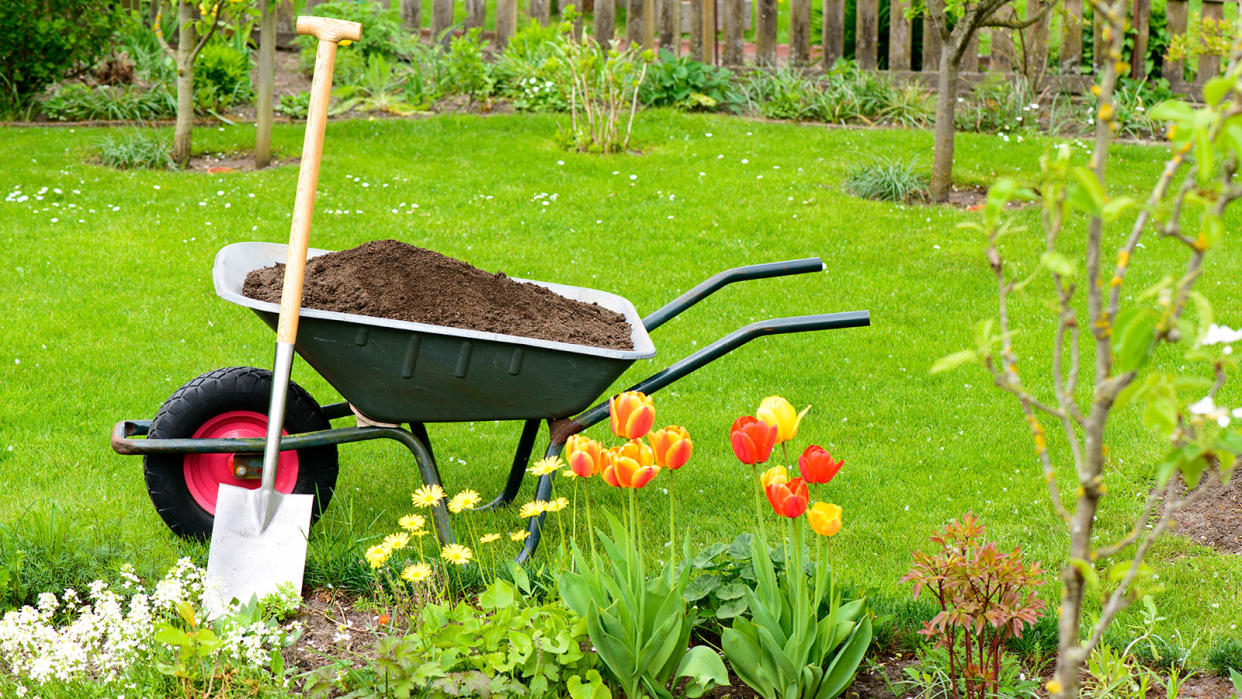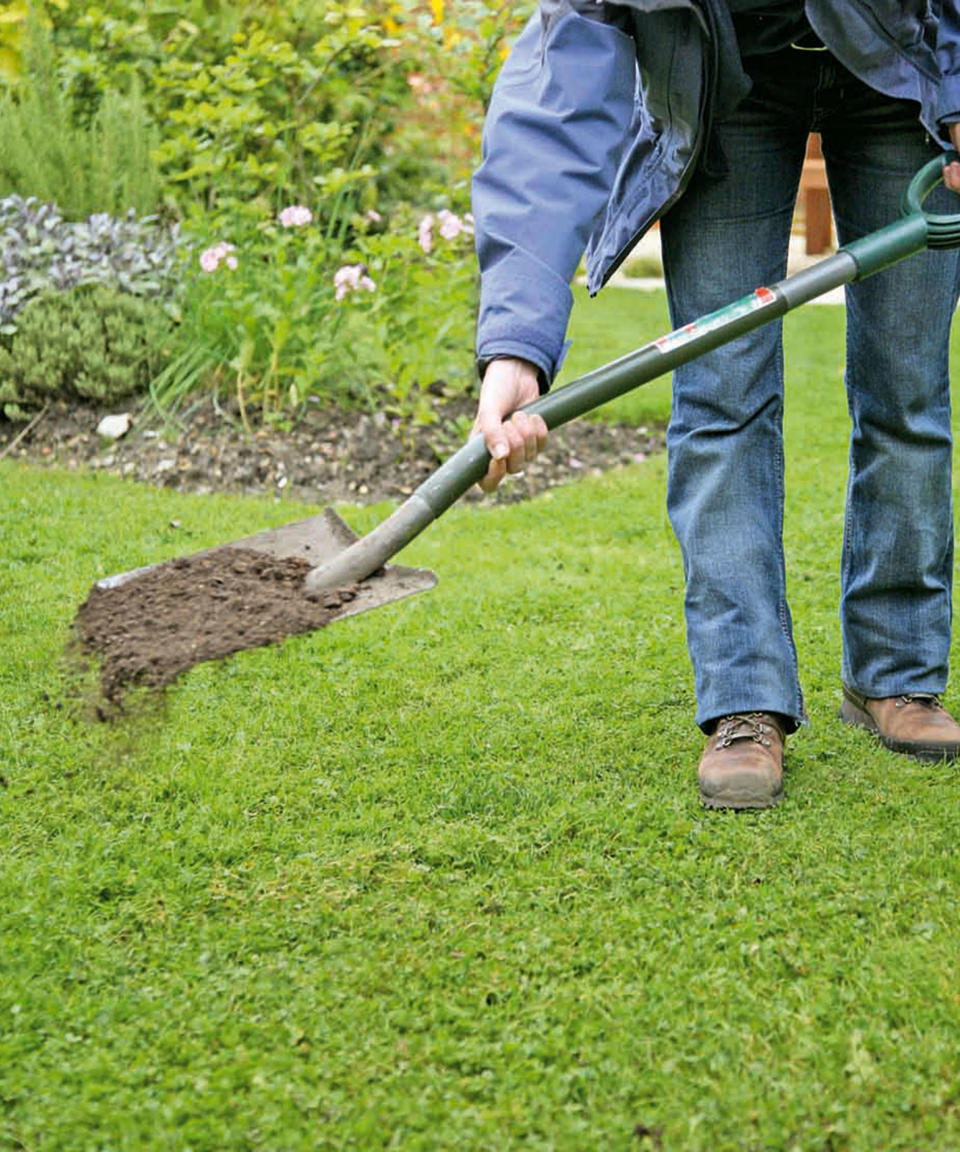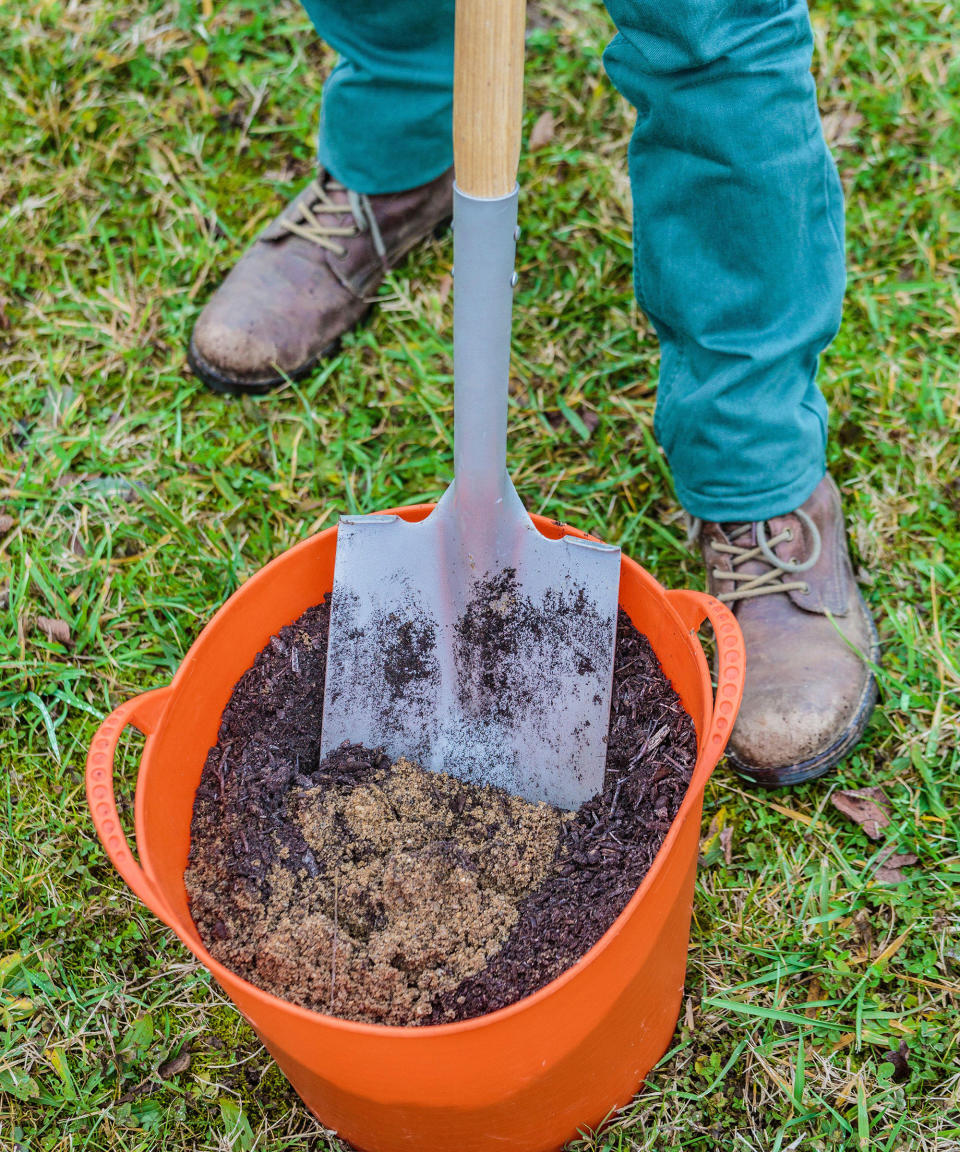Should I use compost on a lawn? Lawn care experts give their verdict

If you're looking to improve your turf, then it's worth considering the benefits of using compost on your lawn.
Adding a layer of compost is a process used by lawn care professionals to create a green and healthy lawn. Often referred to as ‘top dressing’ it can help rescue poor, undernourished lawns or help keep newly laid sod from drying out and in tip top condition.
‘Composting is an important part of lawn care as it provides essential nutrients to the soil, helping to promote healthy grass growth,’ says Susan Brandt, co-founder of Blooming Secrets. ‘It helps improve the texture and structure of the soil, making it easier for water and nutrients to reach grass roots. Incorporating compost into your lawn can help you achieve a lush, green space that is less prone to weeds.’
Benefits of using compost on a lawn
Applying a layer of good-quality compost on your lawn is a great way to boost its condition. Raising nutrient levels, bolstering moisture retention, and encouraging strong, deep roots, it’s definitely a task worth doing.
‘Top dressing pumps up the level of organic matter in the soil and allows the population of microbial activity in the soil to explode very quickly,’ says David Prew, owner of lawn care experts Plantscape Solutions in Austin, TX. ‘Literally top dressing is like organic steroids for your lawn. It causes the root network of the lawn to get much larger and more efficient at extracting water and nutrients.’

Drawbacks to adding compost to a lawn
On the whole, there aren't any major drawbacks to adding a layer of compost to your lawn. If, however, you repeat this process regularly over a few years it can make significant changes that can also lead to unseen issues.
Rhys Charles, CEO of Mower On the Lawn explains, ‘Consider the amount of traffic your lawn gets. If you have a lot of foot traffic, using compost could make the lawn too soft. Another consideration is the climate. If you live in an area with a lot of rainfall, using compost could cause the lawn to become waterlogged.’
When to add compost to your lawn
Adding compost to your lawn is best done as part of your spring or early fall lawn care. Top dressing has most effect when grass is actively growing and you've aerated the lawn.
One word of warning though, don’t expect to see a visible improvement overnight, as Eric DeBoer, agronomist at Simple Lawn Solutions explains: ‘If you do choose to apply some compost, be patient and temper your expectations. It can take some time for the nutrients contained in the compost to mineralize and become available to your plant. Remember also to not lay it on too thick.’

How to add compost to a lawn
‘There are several ways you can use compost on your lawn such as top dressing, side dressing, or mixing it into the soil. Each method has its own advantages and disadvantages so it is important to consider which one would work best for you before deciding,’ says Susan Brandt.
Generally, adding a ¼ or ½ inch layer on top and spreading it out with a flat, wide headed rake, such as this aluminum landscape rake from Amazon, is the quickest and easiest technique.
'Make sure you don't add a layer that's more than half an inch thick,' says gardening expert Steve Bradley. 'The grass needs to grow through it and form roots at a higher level. If the top dressing is too deep the grass beneath will die off and leave a bare patch where weeds can establish.'
Choosing the right type of compost for your lawn
Both homemade and commercial compost can be used on lawns, but it is important that it is of good quality otherwise you can end up adding to your lawn’s problems.
Issues such a patchy die-back or invasive weeds can be caused by using compost that has not broken down thoroughly. Responsibly made compost follows a process that essentially breaks down any remaining pesticides or herbicides that may have been present in the organic matter.
FAQs
Does adding compost work for every grass type?
Yes, this process is ideal for any type of lawn and at any stage of its life. Both warm and cooler season grasses will reap the benefits of this treatment, just don’t apply a compost layer that is any thicker than ¼ or ½ inch as this may smother or even burn the existing grass.
‘Whether lawns are Bermuda, Zoysia, St Augustine or Buffalo Grass it will benefit from top dressing with a high-quality compost material,’ says David Prew, owner of Plantscape Solutions. ‘Top dressing can keep lawns looking great or save a lawn on the brink of needing to be re-sodded. All turf types depend on the symbiotic relationship with microbial activity in the soil to survive and flourish.’
Adding a layer of compost to your soil can be an effective way to boost the growth of your grass, helping to make your lawn green and thick.
By using good-quality compost to top dress your lawn in spring or early fall, you'll reap the benefits of this simple task for months to come.
